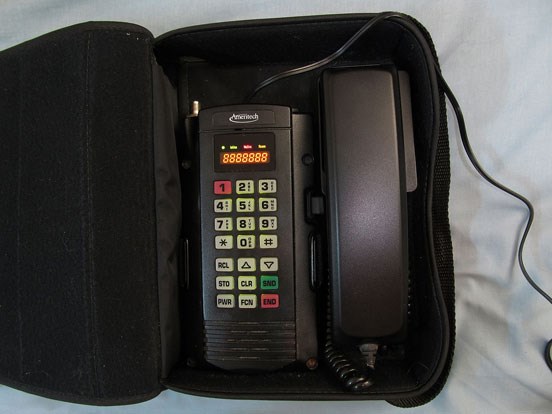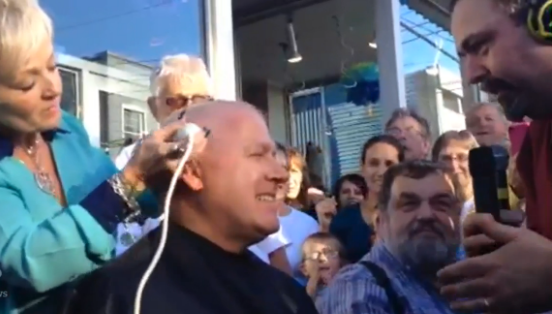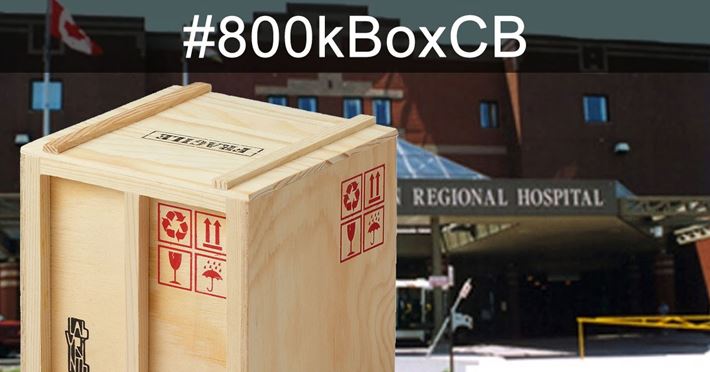The Chronicle Herald informed us on January 17th , that the Cape Breton Regional Hospital has an $800,000 nuclear medicine camera sitting in a box.
It’s been sitting in that box for about a year.
Spokesman, Greg Boone, wants to assure us that it isn’t such a big deal. He suggests that wait times and patients have not been affected. The basis of his assertion is that the three existing cameras the hospital already has, ranging in age from eight to twenty five years old, are doing the job.
The excuses expressed in the Herald article talk about stuff like spending in the next “fiscal year”, and when the warranty coverage commences. It’s the type of indifferent talk that might be of interest to government accountants and maybe the team selling extended warranties at Best Buy.
However, I do not think those factors are very important to people with life threatening health issues, or to the taxpayers in a province than can’t afford to waste $800,000. That’s $800,000 that could be spent elsewhere.
There is an obvious contradiction in the logic expressed by Boone and Rakesh Minocha, the “senior director of building, infrastructure and asset management for the Nova Scotia health authority”.
Doesn’t new nuclear medicine technology have improvements over 25 year old technology?
Let's gain a little perspective.
The newest of the existing cameras is eight years old. That draws an interesting comparison. That’s about the same amount of time that has passed since the first iPhone was introduced in 2007.
For those that use smartphones, think of the changes that have happened since 2007. Could you imagine using one of those old “first generation” iPhones from eight years ago? Back then, they were state of the art. Now it would be hard to give them away on Kijiji. They've been changed and improved. They do more and work better.
Let’s stick with the phone analogy for a moment. What did portable telephone technology look like 25 years ago? By the way, that’s when the oldest of the hospital’s nuclear cameras was acquired.
Well, for those of you that had one at the time, you'll recall that it looked like one of these bulky car phones:

Would it be reasonable to suggest that the technology and capabilities of nuclear medicine cameras have improved over the last eight to twenty five years as well?
If you had cancer symptoms and were given the choice between a twenty five year old medical device and the new one, which diagnostic capabilities would you want to bet your life on?
What if the camera sitting in a box for a year really didn’t have any impact on wait times or patient outcomes?
Let’s suspend our better sense for a moment. Let’s imagine that the new camera doesn’t offer any technological improvements over the twenty five year old technology. And, for the moment, let’s accept the assertion at face value that no patient wait times were affected.
If that is the case, it would appear the province spent $800,000 on a device that we don’t need.
Now they suggested that they received a deal (i.e. “competitive pricing”) for buying an extra one. In so doing, they essentially fell for one of the biggest manipulations that consumers fall for everyday.
A discount can lure people (and apparently health authorities with multi-million dollar budgets) into buying things they don’t need.
Let’s imagine the cost of the camera is typically $1 million dollars. By buying three, Rakesh Minocha thinks he saved $200,000. If the Cape Breton Regional Hospital really doesn’t need the device, then what he really did was waste $800,000. He didn’t save anything.
What does Cecil Clarke’s bald head teach us about “opportunity cost”?

Opportunity cost is the “cost of the best alternative forgone”. If you have only $100 and you spend it on gasoline, then you can’t spend it on groceries. The groceries would be the opportunity cost - what you missed out on.
In this case, spending $800,000 on a nuclear medicine camera that we are not using has an $800,000 opportunity cost.
What other types of medical equipment needs did our Cape Breton Regional Hospital have?
Back in September in a good spirited fundraising campaign, Mayor Clarke pledged to shave his head if he could raise $10,000 in donations.
It was a part of a campaign to help the Cape Breton Regional Hospital Foundation buy a new linear accelerator for cancer treatment. They needed to raise over $900,000.
And all the while that these good people, our mayor, the business community and the citizens of Cape Breton rallied together to raise as much of the $900,000 as they could…
Well… we had a supposedly unnecessary $800,000 nuclear medicine camera sitting in a box. Bought and paid for. Collecting dust.
And now we know exactly what the opportunity cost of wasteful spending is. It had a direct impact on many of the 1,200 new people who unfortunately receive cancer diagnoses in Cape Breton each year. There isn’t likely a family living here on the island that hasn’t been impacted by this deadly disease.
Don’t take the word of bureaucrats or public relations professionals when it comes to matters of life and death for many of our own.
I’m going to reach out to our MLAs to ask that they don’t treat this as routine or acceptable either. It’s about a lot more than rigid conformity to fiscal years and nonsense talk about when warranties commence.
I’m also asking each of you to share this post to your social media channels (Facebook, Twitter, or share with your colleagues). Let’s work together to send a message that this kind of decision making is not acceptable.
It’s time to get that camera out of the box… along with the thinking processes of provincial officials.





13
Log In or Sign Up to add a comment.- 1
arrow-eseek-e1 - 9 of 9 itemsFacebook Comments